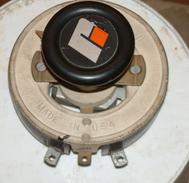PFF
Computer
- Oct 27, 2004
- 23
Hi,
I'm testing a switching supply that's 45watts at 12 vdc. I put it on a series of power resistors to test it. Set the resistors to 3.2 ohms. After running for a while the resistors got real hot. I turned it off and checked the resistance. It had dropped to .4 ohms due to the heat. How can I set the load so that it doesn't wonder around? I can guess but there's no guarantee I'll hit the right resistance.
Thanks
I'm testing a switching supply that's 45watts at 12 vdc. I put it on a series of power resistors to test it. Set the resistors to 3.2 ohms. After running for a while the resistors got real hot. I turned it off and checked the resistance. It had dropped to .4 ohms due to the heat. How can I set the load so that it doesn't wonder around? I can guess but there's no guarantee I'll hit the right resistance.
Thanks


